Classical Ballet Ludwig Minkus "Don Quixote" (Ballet in 3 acts)
Mikhailovsky Classical Ballet and Opera Theatre (established 1833)

Running time: 3 hours
The performance has 2 intermissions
Schedule for Ludwig Minkus "Don Quixote" (Ballet in 3 acts) 2022
Composer: Ludwig Minkus
Set Designer: Vyacheslav Okunev
Choreography: Marius Petipa
Choreography: Alexander Gorsky
Staging: Mikhail Messerer
Choreography: Igor Belsky
Costume Designer: Alla Marusina
Lighting Designer: Alexander Kibitkin
Choreography: Nina Anisimova
Musical Director: Pavel Bubelnikov
Orchestra: Mikhailovsky Symphony Orchestra
Classical Ballet in 3 acts
World premiere: 14 December 1869, Bolshoi Theatre, Moscow (choreography by Marius Petipa)
Premiere of this production: 11 April 2012, Mikhailovsky theatre, St. Petersburg, Russia
"Don Quixote" is one of Marius Petipa's much-loved 19th-century classics - its story is drawn from Miguel de Cervantes's classic novel and set to Ludwig Minkus's score. The ballet has long been acclaimed for its virtuoso dancing, beautiful and technically demanding 'vision scene' and the famously bravura and breath-taking Act III pas de deux.
Libretto: Marius Petipa
The Mikhailovsky Theatre would like to express its gratitude to Mr Toshihiko Takahashi for his support in creating the production.
Don Quixote is one of the most life-affirming, colourful and festive ballets. It’s interesting that despite its name, this brilliant piece is not a stage version of the famous novel by Miguel de Cervantes, but an original choreographic work by Marius Petipa vaguely based on Don Quixote.
Colourful, vibrant, direct, spontaneous: all these epithets can be applied to Don Quixote, but none of them can fully convey the sense of joy that the ballet invariably arouses in the audience. The red capes of the toreadors, the strumming of guitars, the clicking of castanets, coquettish glances from behind open fans... The enchanting levity of the ‘ballet of Spain’ surges onto the Mikhailovsky Theatre stage. Each performer interprets this ballet in their own way. While it demands virtuosity and stamina, the dancers are given complete freedom of choice in the way they act the parts. It is possible to depict the sincerity and straightforwardness of the characters or present them as cunning deceivers; place an emphasis on simple domestic details, or portray fiery passions. The permutations are endless, and therein lies one of the secrets of the ballet’s phenomenal popularity.
In 1869, the Moscow Bolshoi Theatre gave a premiere of the comic play staged by Marius Petipa to Minkus’s music, telling a story of the failed wedding of young beauty and a rich nobleman, because of the true love of the heroine to a poor guy.
In 1871, Petipa created a new version of the ballet for the premiиre at the Bolshoi Kamenny Theatre in St. Petersburg. In 1900, a new production of Don Quixote was staged by Alexander Gorsky. Gorsky kept the scenario plan and, partly, Petipa’s choreography. Gorsky organized the crowd scenes in a new way to avoid “any symmetry”. Borrowing from the principles of theatrical aesthetics of the Moscow Art Theatre, Gorsky did much for the “revival” of academic ballet.
In 1902, the Gorsky’s production was shown at the Mariinsky Theatre. The stars of the imperial stage, as Mathilde Kschessinska (Kitri), Nicholas Legat (Basilio), Enrico Cecchetti (Sancho Panza) contributed to the success of this remarkable performance. The production became the classical one.
At the Mikhailovsky Theatre the ballet Don Quixote has been restaged by Mikhail Messerer: he used much of what had been suggested by several generations of choreographers, including students and followers of Alexander Gorsky. The best ballet soloists are happy share with the audience the joy they feel performing the ballet that never fades.
Synopsis
Prologue
Don Quixote, having read his fill of romances about knights and chivalry, decides to set off on his travels in order to achieve great feats, which will bring glory to his name. As his sword-bearer, he chooses the loyal Sancho Panza, a man of sober outlook who is not prone to dreams.
Act I
In Barcelona there is festive animation in the air. Kitri, daughter of the innkeeper, is flirting with Basilio, the barber, who is in love with her. Finding them together Lorenzo, Kitri’s father, chases Basilio away: the barber is no fit match for his daughter. Lorenzo intends Kitri to marry Gamache, a rich nobleman. Kitri refuses outright to submit to her father’s will.
At the height of the merry-making, Don Quixote appears in the square, accompanied by his sword bearer, Sancho Panza. Catching sight of the innkeeper, Don Quixote mistakes him for the owner of a knight’s castle and greets him with respect. Lorenzo responds in like terms and invites Don Quixote into the inn. Sancho Panza is left in the square. But when some young people start to mock Sancho, Don Quixote immediately hurries to his sword-bearer’s rescue.
Seeing Kitri, Don Quixote thinks she is the beautiful Dulcinea whom he has seen in his dreams and chosen as ‘the lady of his heart’. But Kitri disappears. She has run off with Basilio. Lorenzo, Gamache and Don Quixote set out to look for her.
Act II
Scene 1
Kitri and Basilio are hiding in a tavern. Here they are found by Lorenzo, Gamache and Don Quixote. Lorenzo wishes to make an immediate announcement of the betrothal of Kitri and Gamache. But Basilio, by agreement with Kitri, pretends to take his life. Kitri sobs over the body of her sweetheart. Don Quixote overcоme by noble indignation accuses Lorenzo of hardheartedness and, threatening him with his sword forces him to agree to his daughter’s marriage with the barber Basilio jumps to his feet. There is no point in him pretending to be dead am longer.
Scene 2
In the glade by the windmills is a sprawling gipsy encampment. Here too is a puppet theatre. Don Quixote and Sancho soon appear on the scene. The owner of the puppet theatre invites Don Quixote to watch a show. Don Quixote follows the performance with rapt attention and, forgetting it is theatre, rushes on to the stage, sword in hand, to defend those who need his protection. He breaks down the stage, sends the puppets flying and, catching sight of the windmills, mistakes them for evil magicians whom he has to get the better of. Grabbing a mill sail, he is first lifted into the air and then falls to the ground.
Scene 3
The wounded Don Quixote and Sancho Panza find themselves in a forest. To Don Quixote, the forest seems to be full of monsters and giants. Sancho Panza settles Don Quixote down to sleep, while he runs off for help. In his dreams, Don Quixote sees Dulcinea, ‘the lady of his heart’, surrounded by Dryads and fairies Sancho Panza comes back with the Duke and Duchess who have been hunting in the forest. He begs them to help the dreaming Don Quixote. The Duke and Duchess invite the wandering knight to visit them m their castle.
Act III
The Duke’s castle. All is ready for the reception of Don Quixote.
Having heard from Sancho Panza the happy story of Kitri and Basilio’s love, the Duke and Duchess have kindly agreed to allow them to hold their wedding in the castle. Don Quixote and Sancho Panza are invited to occupy the seats of honor. A solemn procession files past. Catching sight of Kitri, Don Quixote again mistakes her for ‘the lady of his reveries’. But the Duke and Sancho Panza manage to persuade him that she is the very same innkeeper’s daughter whom he helped to unite with Basilio, her sweetheart.
The festivities continue. All thank the valiant knight and his faithful sword-bearer.






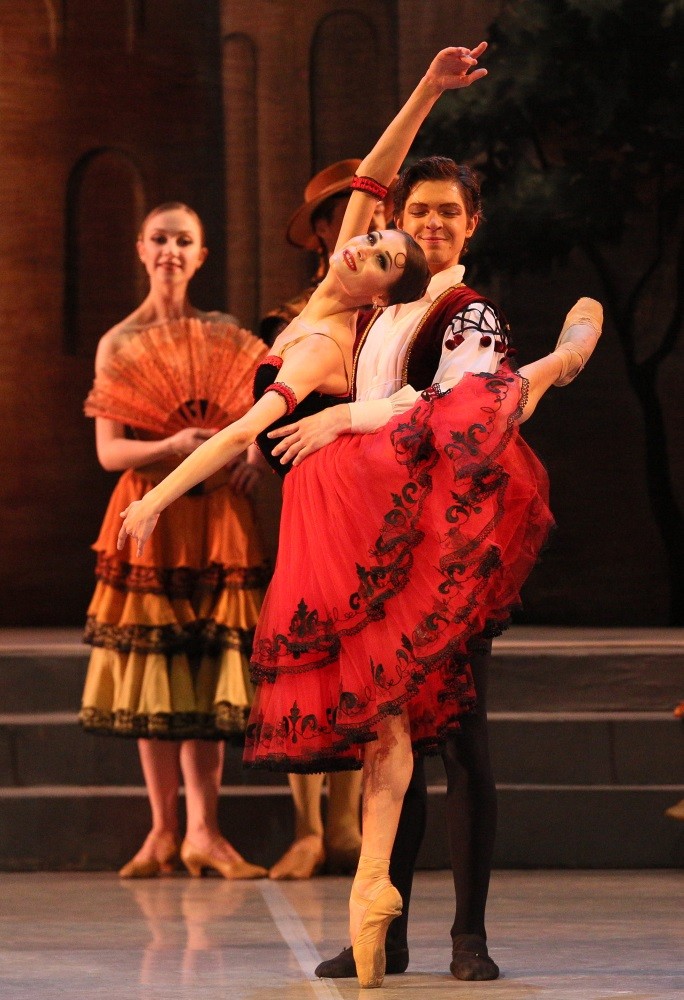


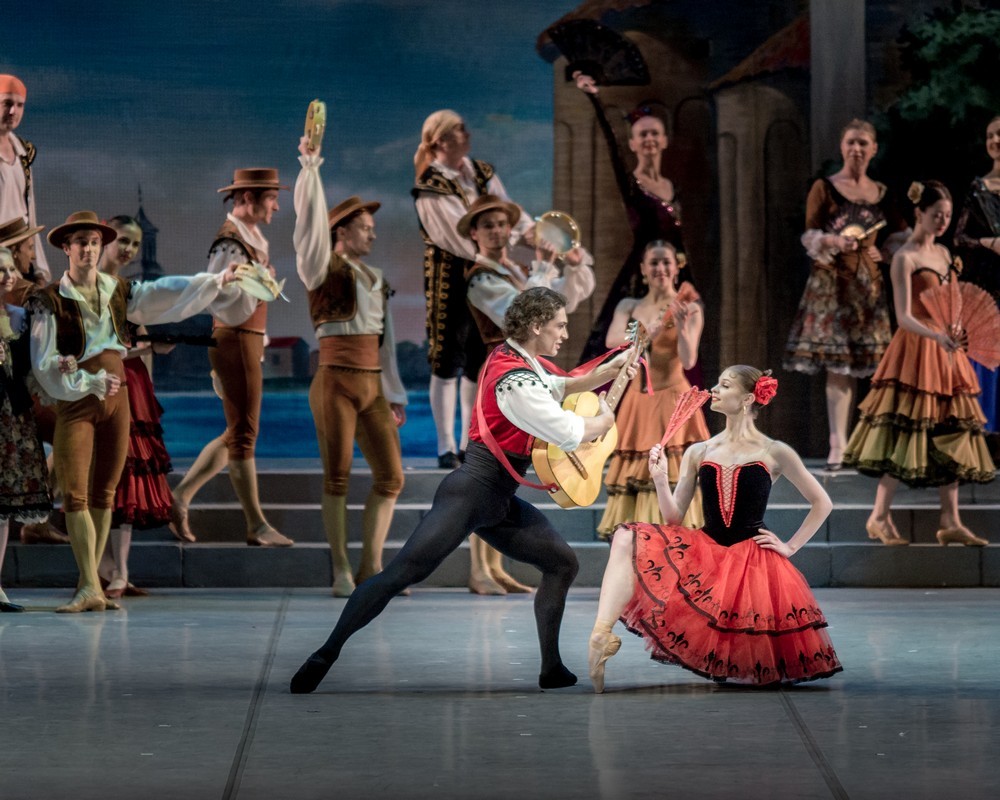
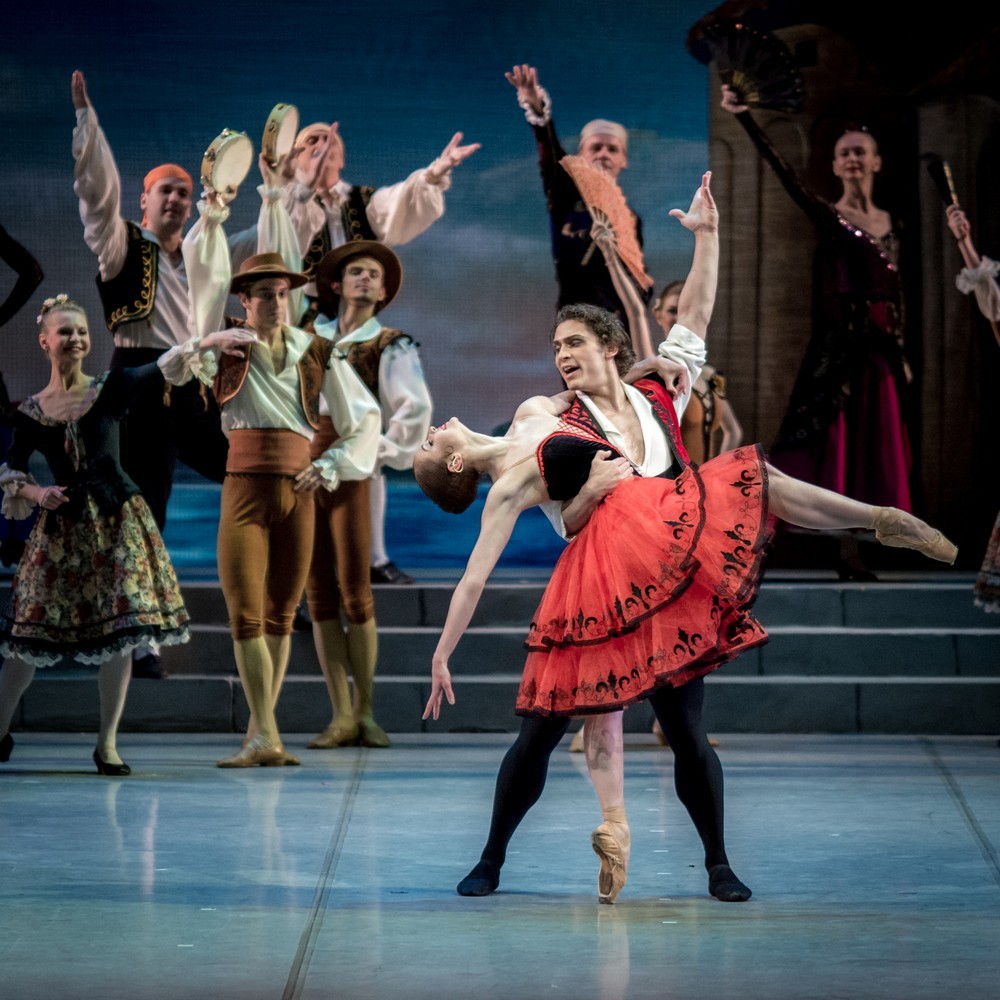



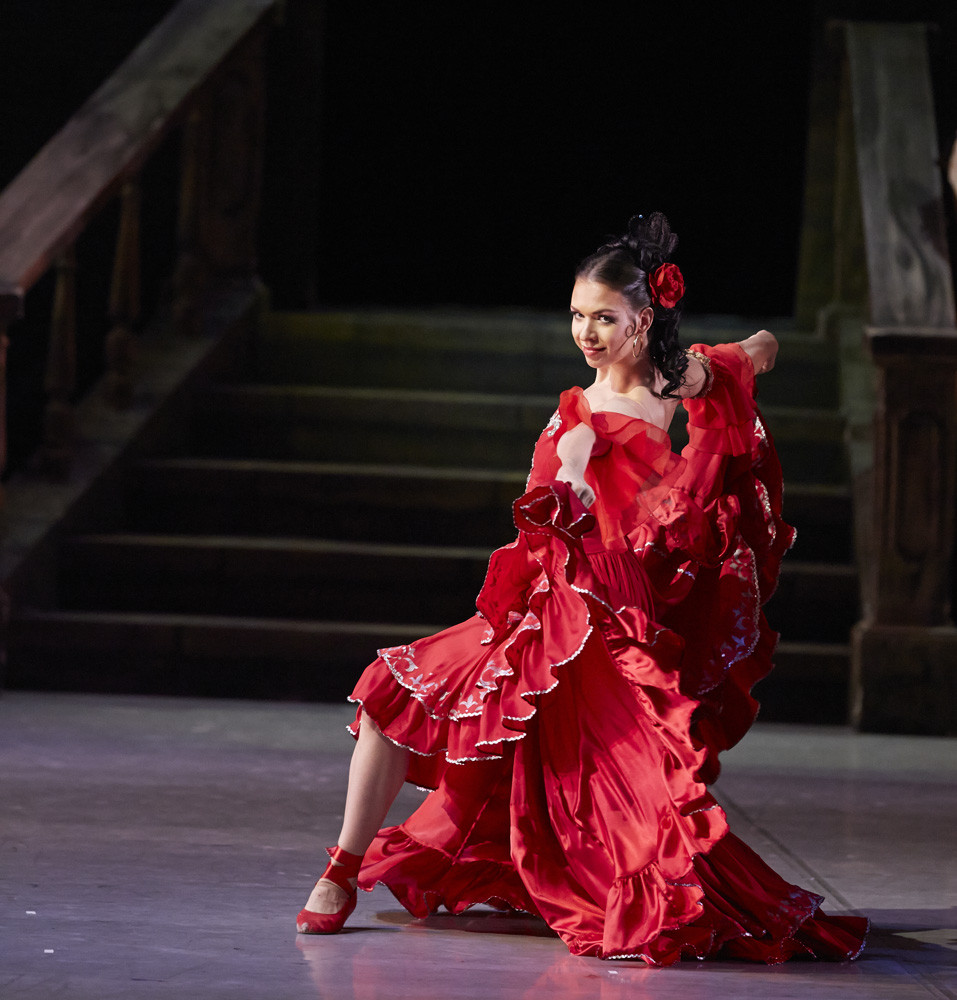



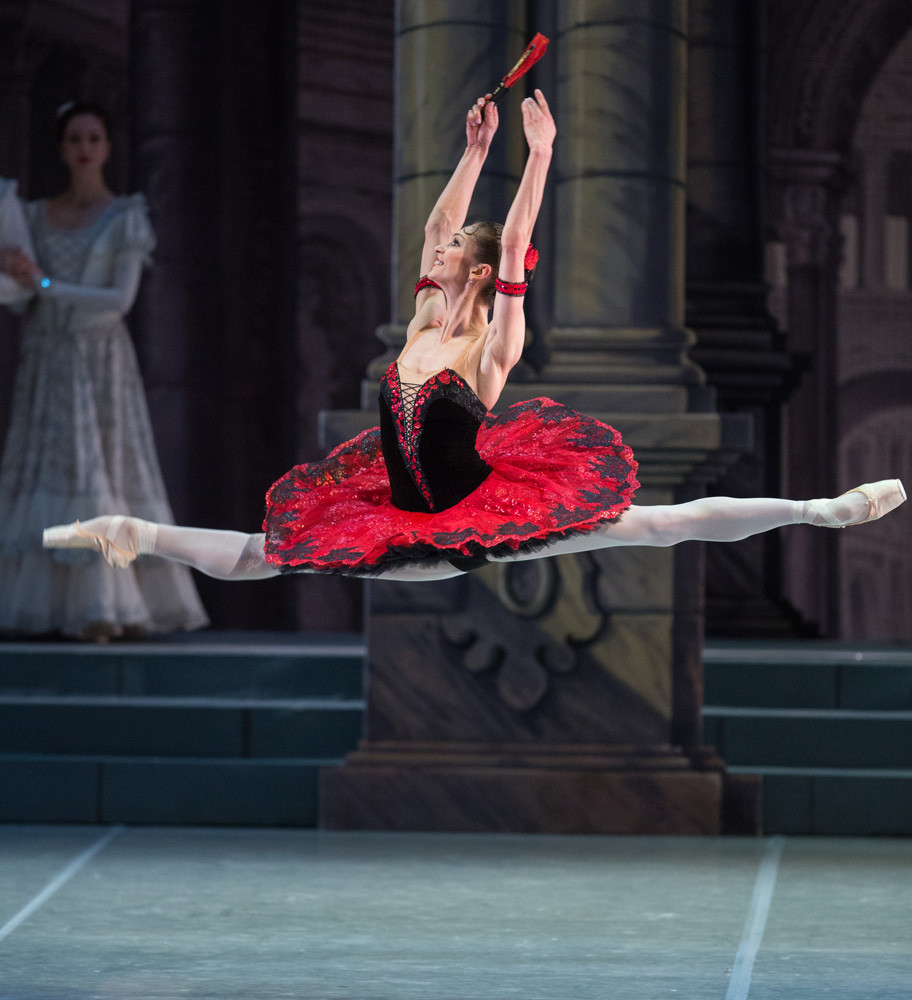







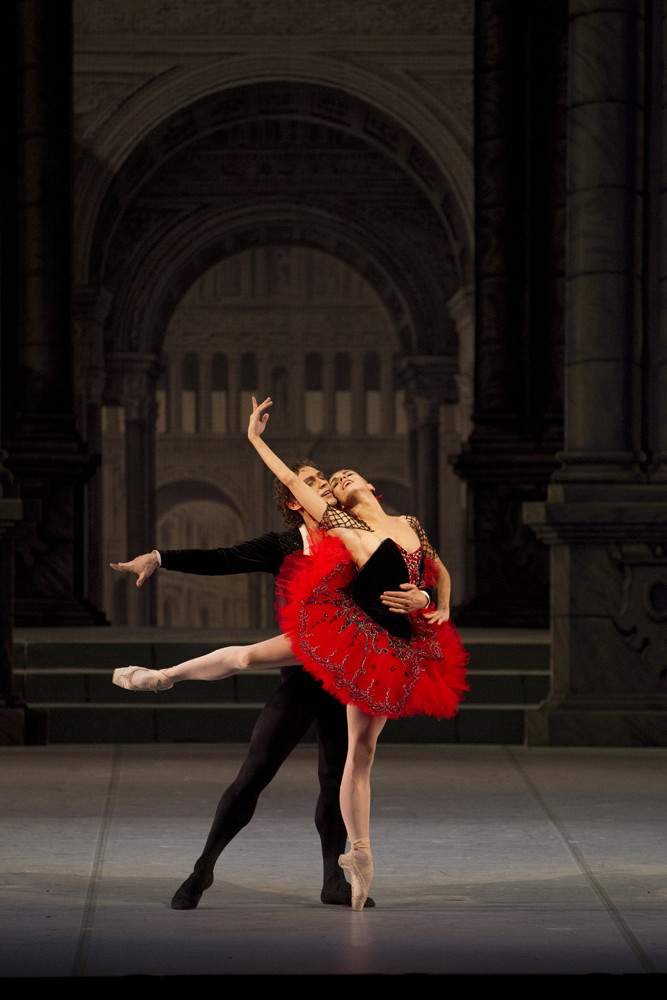





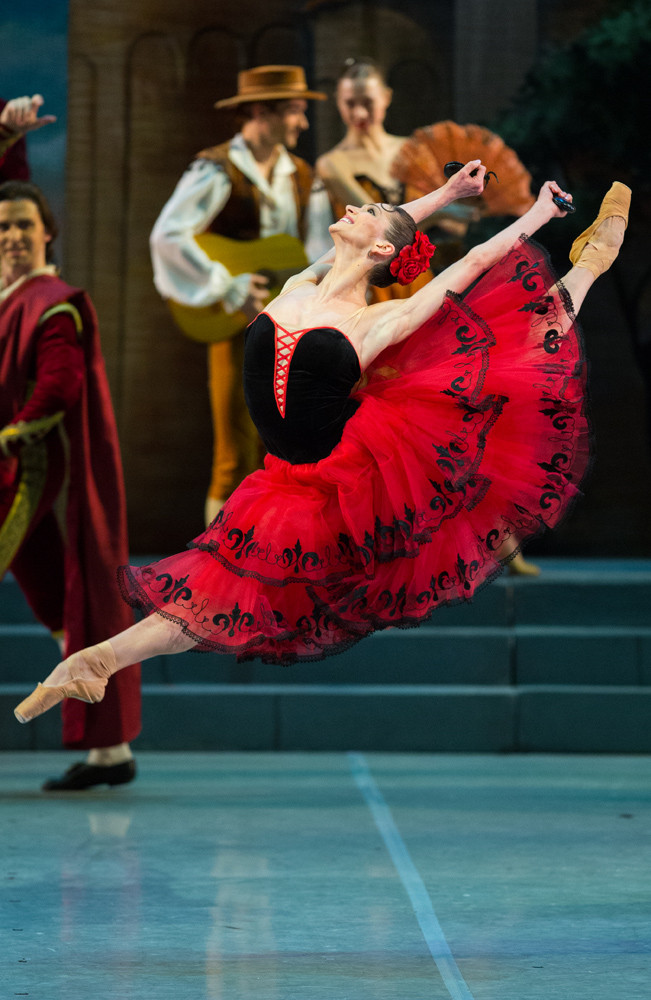
Schedule for Ludwig Minkus "Don Quixote" (Ballet in 3 acts) 2022
| Ludwig Minkus "Don Quixote" |
|
| |
|
|
|
About This Video 02:13 Ludwig Minkus "Don Quixote"
Mikhailovsky Classical Ballet and Opera Theatre, St. Petersburg, Russia |
     
|



